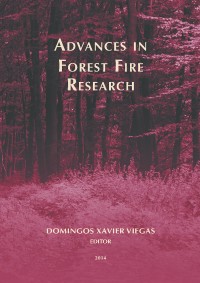Please use this identifier to cite or link to this item:
https://hdl.handle.net/10316.2/34492| DC Field | Value | Language |
|---|---|---|
| dc.contributor.author | Marchand, Alexis | |
| dc.contributor.author | Collin, Anthony | |
| dc.contributor.author | Boulet, Pascal | |
| dc.contributor.author | Acem, Zoubir | |
| dc.contributor.author | Magnolini, Françis | |
| dc.contributor.author | Charette, Hervé | |
| dc.contributor.author | Lepelletie, Marc | |
| dc.contributor.author | Van Waelfelghem, Yann | |
| dc.date.accessioned | 2014-10-29T17:06:40Z | |
| dc.date.accessioned | 2020-09-09T21:31:43Z | - |
| dc.date.available | 2014-10-29T17:06:40Z | |
| dc.date.available | 2020-09-09T21:31:43Z | - |
| dc.date.issued | 2014 | - |
| dc.identifier.isbn | 978-989-26-0884-6 (PDF) | |
| dc.identifier.uri | https://hdl.handle.net/10316.2/34492 | - |
| dc.description.abstract | The present work addresses the spectral radiative characterization of firefighters’ jackets, which are the main component of their Personal Protective Equipments (PPE). During their tasks firefighters have to wear their PPE that must ensure simultaneously comfort, mobility and first and foremost thermal protection. Over time the nature and constituents of the firefighter's coats have strongly evolved. They were made up with leather for a long time, and are mainly designed in multiple-layer fabrics today. Given that, we can find many garments which overcome with one or several specifications in terms of comfort, thermal protection, heat dissipation, moisture barrier, mobility, weight … Numerous studies are found in the literature dedicated to one of these properties. None of the works related to their thermal performance considers the spectral radiative properties, however. Obviously, thermal protection is of primary importance and since firemen may be exposed to various heat threats, which present different spectral characteristics, it becomes also of prime interest to investigate the spectral radiative properties of these new products. To our best knowledge, the last study which referred to the spectral properties dates back to 1974 with the work by Quintiere [1] who provided the spectral radiative properties of several fabrics, within a relatively wide spectral range from 0.3 to 22 μm. The present study aims at investigating the spectral radiative properties of currently available fabrics used by French firefighters in the range from 0.25 to 16 μm covering both IR-Visible range. | eng |
| dc.language.iso | eng | - |
| dc.publisher | Imprensa da Universidade de Coimbra | por |
| dc.relation.ispartof | http://hdl.handle.net/10316.2/34013 | por |
| dc.rights | open access | - |
| dc.subject | Fire protective clothing | eng |
| dc.subject | Radiative properties | eng |
| dc.subject | Absorptivity | eng |
| dc.title | Radiative properties of firefighters’ protective clothing worn during forest fire operations | por |
| dc.type | bookPart | por |
| uc.publication.firstPage | 1480 | - |
| uc.publication.lastPage | 1484 | - |
| uc.publication.location | Coimbra | por |
| dc.identifier.doi | 10.14195/978-989-26-0884-6_162 | - |
| uc.publication.section | Chapter 5 - Fire Suppression and Safety | por |
| uc.publication.digCollection | PB | por |
| uc.publication.orderno | 162 | - |
| uc.publication.area | Ciências da Engenharia e Tecnologias | por |
| uc.publication.bookTitle | Advances in forest fire research | - |
| uc.publication.manifest | https://dl.uc.pt/json/iiif/10316.2/34492/211615/manifest?manifest=/json/iiif/10316.2/34492/211615/manifest | - |
| uc.publication.thumbnail | https://dl.uc.pt/retrieve/11175310 | - |
| uc.publication.parentItemId | 53868 | - |
| uc.itemId | 70343 | - |
| item.fulltext | With Fulltext | - |
| item.grantfulltext | open | - |
| Appears in Collections: | Advances in forest fire research | |
Files in This Item:
| File | Description | Size | Format | |
|---|---|---|---|---|
| 978-989-26-0884-6_162.pdf | 2 MB | Adobe PDF |  |
Items in DSpace are protected by copyright, with all rights reserved, unless otherwise indicated.
